Mercedes E-Class Wagon VS Toyota C-HR – Specs, Efficiency & Price Comparison
Which model is the better choice – the Mercedes E-Class Wagon or the Toyota C-HR? We compare performance (585 HP vs 223 HP), boot capacity (615 L vs 447 L), efficiency (0.50 L vs 0.80 L), and of course, the price (52600 £ vs 29100 £).
Find out now which car fits your needs better!
The Mercedes E-Class Wagon (Estate) is powered by a Diesel MHEV, Plugin Hybrid or Petrol MHEV engine and comes with a Automatic transmission. In comparison, the Toyota C-HR (SUV) features a Full Hybrid or Plugin Hybrid engine and a Automatic gearbox.
When it comes to boot capacity, the Mercedes E-Class Wagon offers 615 L, while the Toyota C-HR provides 447 L – depending on what matters most to you. If you’re looking for more power, you’ll need to decide whether the 585 HP of the Mercedes E-Class Wagon or the 223 HP of the Toyota C-HR suits your needs better.
There are also differences in efficiency: 0.50 L vs 0.80 L. In terms of price, the Mercedes E-Class Wagon starts at 52600 £, while the Toyota C-HR is available from 29100 £.
Compare all the key specs now and find out which model fits your lifestyle best!
Mercedes E-Class Wagon
The Mercedes-Benz E-Class Wagon offers a harmonious blend of luxury and practicality, making it a favourite for those who value both style and functionality. Its sleek exterior design is matched by a sophisticated interior that provides a comfortable and spacious environment for both driver and passengers. This vehicle also boasts advanced technology features, ensuring a smooth and connected driving experience.
details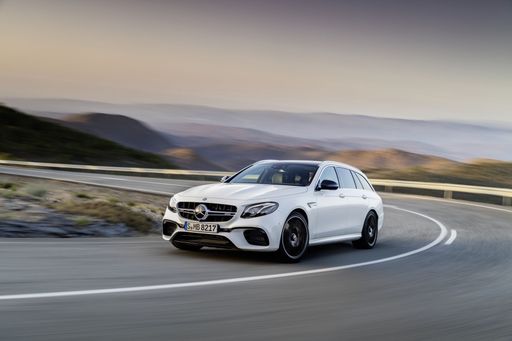 @ group-media.mercedes-benz.com
@ group-media.mercedes-benz.com
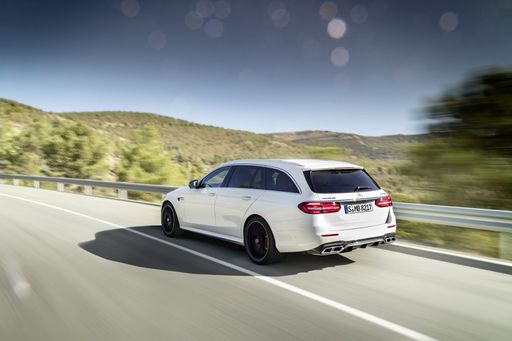 @ group-media.mercedes-benz.com
@ group-media.mercedes-benz.com
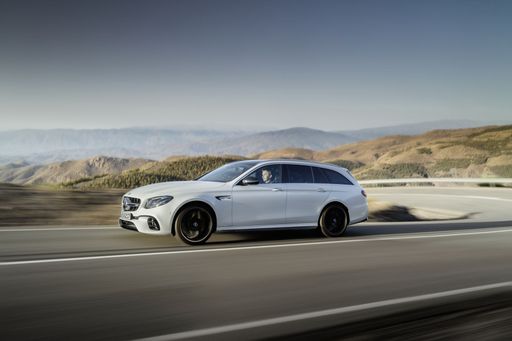 @ group-media.mercedes-benz.com
@ group-media.mercedes-benz.com
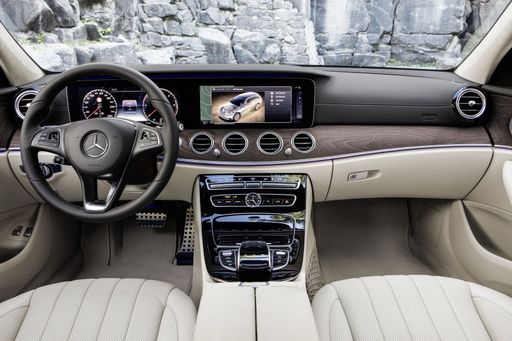 @ group-media.mercedes-benz.com
@ group-media.mercedes-benz.com
Toyota C-HR
The Toyota C-HR stands out with its distinctive and bold design that combines sleek, angular lines with a sporty posture. Its comfortable and stylish interior is equipped with advanced technology features, providing a seamless driving experience. The vehicle offers impressive handling and performance, making it a compelling choice for those who appreciate a blend of practicality and flair on the road.
details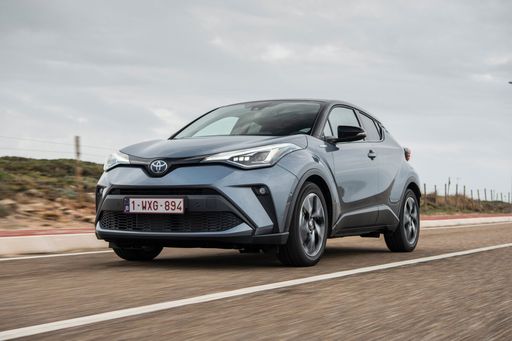 @ Toyota
@ Toyota
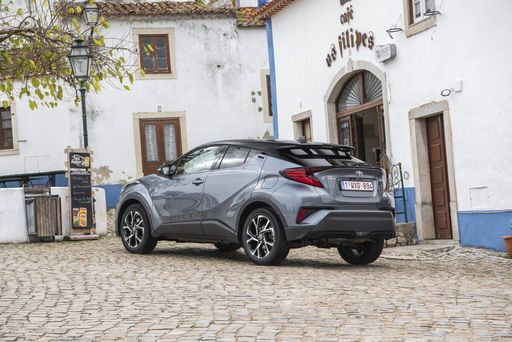 @ Toyota
@ Toyota
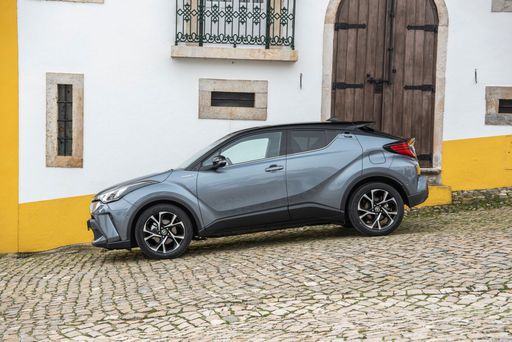 @ Toyota
@ Toyota
 @ Toyota
@ Toyota
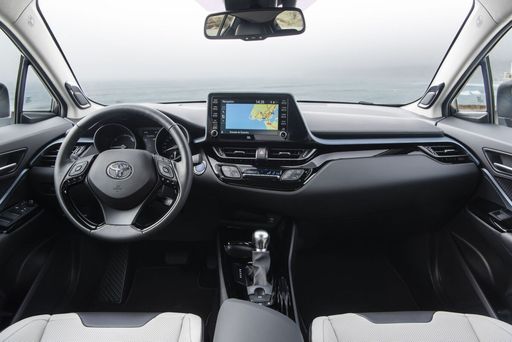 @ Toyota
@ Toyota

|

|
|
|
|
Costs and Consumption |
|
|---|---|
|
Price
52600 - 121800 £
|
Price
29100 - 42800 £
|
|
Consumption L/100km
0.5 - 7.9 L
|
Consumption L/100km
0.8 - 5.1 L
|
|
Consumption kWh/100km
-
|
Consumption kWh/100km
-
|
|
Electric Range
97 - 110 km
|
Electric Range
68 km
|
|
Battery Capacity
21.20 kWh
|
Battery Capacity
-
|
|
co2
12 - 181 g/km
|
co2
17 - 115 g/km
|
|
Fuel tank capacity
50 - 66 L
|
Fuel tank capacity
43 L
|
Dimensions and Body |
|
|---|---|
|
Body Type
Estate
|
Body Type
SUV
|
|
Seats
5
|
Seats
5
|
|
Doors
5
|
Doors
5
|
|
Curb weight
1900 - 2435 kg
|
Curb weight
1505 - 1755 kg
|
|
Trunk capacity
460 - 615 L
|
Trunk capacity
350 - 447 L
|
|
Length
4949 - 4959 mm
|
Length
4362 mm
|
|
Width
1880 mm
|
Width
1832 mm
|
|
Height
1469 - 1497 mm
|
Height
1558 - 1564 mm
|
|
Payload
540 - 645 kg
|
Payload
375 - 425 kg
|
Engine and Performance |
|
|---|---|
|
Engine Type
Diesel MHEV, Plugin Hybrid, Petrol MHEV
|
Engine Type
Full Hybrid, Plugin Hybrid
|
|
Transmission
Automatic
|
Transmission
Automatic
|
|
Transmission Detail
Automatikgetriebe
|
Transmission Detail
-
|
|
Drive Type
All-Wheel Drive, Rear-Wheel Drive
|
Drive Type
Front-Wheel Drive, All-Wheel Drive
|
|
Power HP
186 - 585 HP
|
Power HP
140 - 223 HP
|
|
Acceleration 0-100km/h
4.1 - 8.8 s
|
Acceleration 0-100km/h
7.4 - 9.9 s
|
|
Max Speed
213 - 250 km/h
|
Max Speed
175 - 180 km/h
|
|
Torque
320 - 750 Nm
|
Torque
-
|
|
Number of Cylinders
4 - 6
|
Number of Cylinders
4
|
|
Power kW
137 - 430 kW
|
Power kW
103 - 164 kW
|
|
Engine capacity
1993 - 2999 cm3
|
Engine capacity
1798 - 1987 cm3
|
General |
|
|---|---|
|
Model Year
2023 - 2024
|
Model Year
2024 - 2025
|
|
CO2 Efficiency Class
E, B, F, D, G
|
CO2 Efficiency Class
C, B
|
|
Brand
Mercedes-Benz
|
Brand
Toyota
|
Mercedes E-Class Wagon
Introduction to the Mercedes-Benz E-Class Wagon
The Mercedes-Benz E-Class Wagon, or T-Modell, has long been synonymous with luxury, versatility, and cutting-edge technology. It stands as a paragon of engineering excellence, continually raising the bar in the premium estate category. Catering to a wide array of needs, this model combines elegance with functionality, offering both performance and practicality in equal measure.
State-of-the-Art Powertrains
At the heart of the E-Class Wagon are its diverse powertrain options, designed to meet varying driver preferences. Boasting everything from mild-hybrid diesel and petrol engines to advanced plug-in hybrid systems, the model ensures reduced emissions without compromising performance. Engine options range from 220 PS to a thrilling 585 PS, supported by seamless automatic gearboxes that provide a smooth and dynamic driving experience.
Innovative Features and Technology
The Mercedes-Benz E-Class Wagon is brimming with innovative features that enhance safety and driving pleasure. The latest models come equipped with intelligent drive features, including advanced driver-assistance systems that anticipate and react to road conditions in real time. These include adaptive cruise control, lane-keeping assist, and autonomous emergency braking, working together to create a safer and more comfortable journey.
Exceptional Comfort and Practicality
Possessing an uncompromising attention to detail, the E-Class Wagon offers luxurious interiors that blend premium materials with cutting-edge technology. The spacious cabin seats five comfortably, while the load capacity of up to 615 litres ensures ample space for luggage and equipment. Options for exclusive trim lines, such as the AMG Line and Exclusive Premium variants, allow for bespoke touches tailored to individual tastes.
Eco-Friendly Efficiency
As the automotive industry pushes towards sustainability, Mercedes-Benz has ensured that the E-Class Wagon stays ahead of the curve. With CO2 emissions ranging from a mere 12 g/km in hybrid variants to a commendable efficiency of 181 g/km for the more powerful models, and fuel consumption as low as 0.5 L/100km, these estates deliver eco-friendly performance that doesn't sacrifice power.
Advanced Safety Systems
Safety is paramount in the E-Class Wagon, thanks to the incorporation of pioneering systems that protect both driver and passengers. The models benefit from sophisticated airbags, intelligent braking technology, and structural enhancements that have all contributed to an enhanced safety rating. Additionally, dynamic handling updates ensure a stable ride even in challenging driving conditions.
Conclusion
In summary, the Mercedes-Benz E-Class Wagon is a luxury vehicle that pushes boundaries through its impressive range of technical features and innovation. Whether for urban commutes or grand touring, the estate's harmonious blend of efficiency, performance, and luxury sets a new standard for what a premium estate can offer.
Toyota C-HR
Revolutionising the Crossover Segment: The Toyota C-HR
The Toyota C-HR has firmly established itself as a standout contender in the compact crossover segment. Known for its distinct design and hybrid capabilities, the C-HR continues to prioritise innovation and efficiency. In this article, we delve into the technical details that make the 2024 iteration a compelling choice for discerning buyers.
Distinctive Design and Aerodynamics
The Toyota C-HR boasts a striking design that combines angular lines with modern aesthetics. This isn't merely for show; the design enhances aerodynamics, improving fuel efficiency and handling. With dimensions of 4362mm in length and a sophisticated structure, the C-HR strikes a balance between urban agility and on-road stability.
Impressive Hybrid Powertrains
The C-HR lineup offers innovative hybrid and plug-in hybrid drivetrain options. The full hybrid system is tailored for those who seek both economic and environmental benefits. It combines a petrol engine with an electric motor to deliver power outputs ranging from 140 to 223 PS, achieving remarkable fuel consumption rates from 0.8 to 5.1 L/100km. The 2.0 Plug-In Hybrid variant impresses with an electric range of 67 km, ideal for urban commuters.
Unmatched Efficiency and Performance
Acceleration figures for the C-HR range from 7.4 to 9.9 seconds to reach 0-100 km/h, ensuring a responsive driving experience. Maximum speeds between 175 and 180 km/h cater to those who appreciate a bit of zest on the open road. Coupled with CVT automatic transmission and both front-wheel and all-wheel-drive configurations, the C-HR adapts to various driving conditions with ease.
Advanced Technology and Features
Inside, the C-HR is equipped with the latest technology aimed at providing connectivity and comfort. The model hosts an array of features across its diverse trim levels, including Business Edition, Lounge, and the sporty GR SPORT. Each variant is designed to meet the demands of different lifestyles, ensuring there's a C-HR model to suit every taste.
Sustainability and Cost Efficiency
With CO2 emissions ranging from 19 to 115 g/km, the C-HR stands as a testament to Toyota's commitment to sustainability. Financially savvy consumers will also appreciate the running cost, with monthly expenses from €959 to €1204, and a cost per km as low as 38.4 cents. Such efficiency makes the vehicle an attractive option for eco-minded buyers.
Conclusion: A Forward-Thinking Choice
The 2024 Toyota C-HR embodies Toyota's forward-thinking approach to automotive innovation, blending eco-friendly hybrid technologies with stylish design and practicality. It offers a glimpse into the future of driving, where efficiency meets elegance. Whether you're a city dweller or an adventure seeker, the C-HR promises a driving experience that is both enjoyable and environmentally conscious.
The prices and data displayed are estimates based on German list prices and may vary by country. This information is not legally binding.
